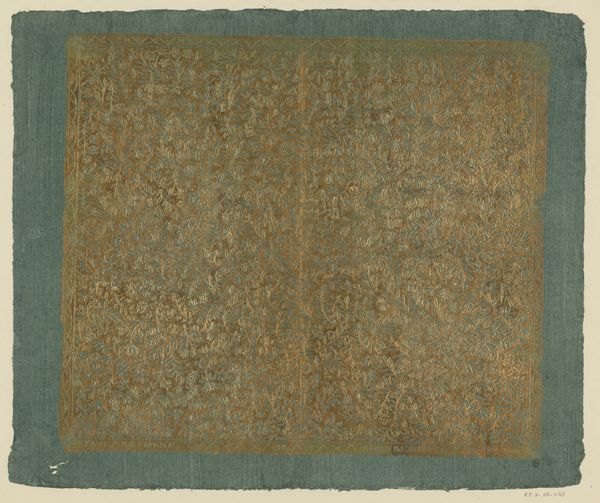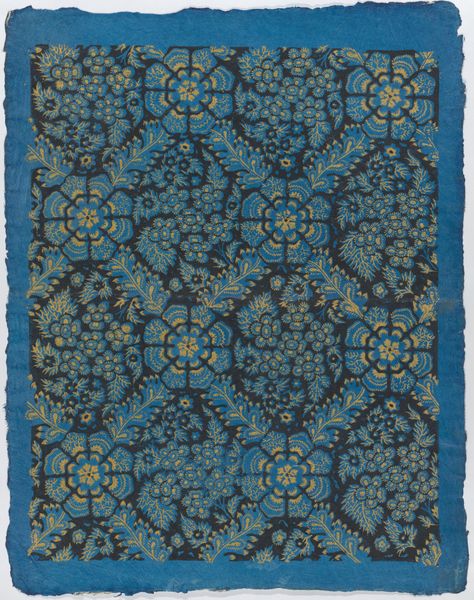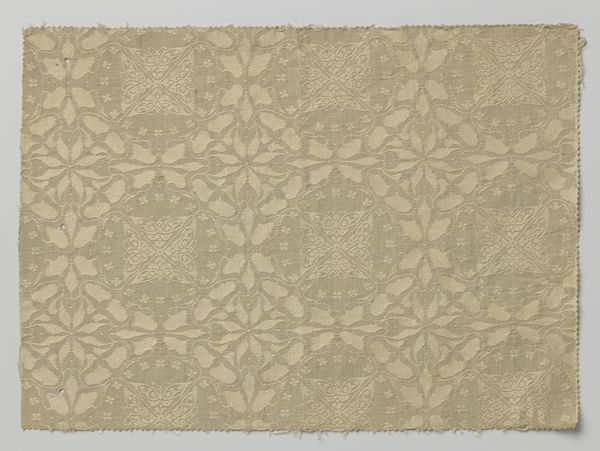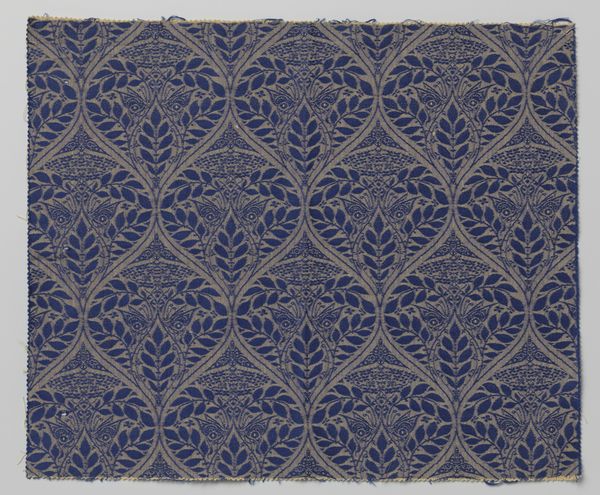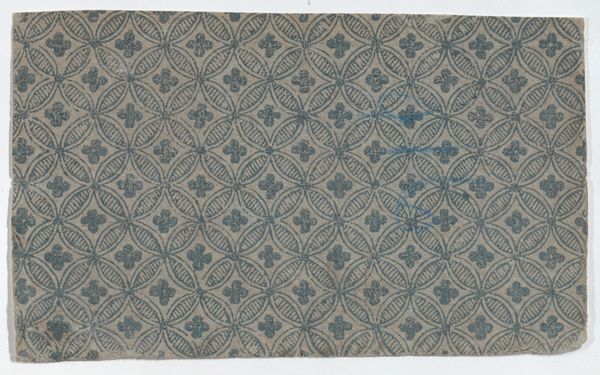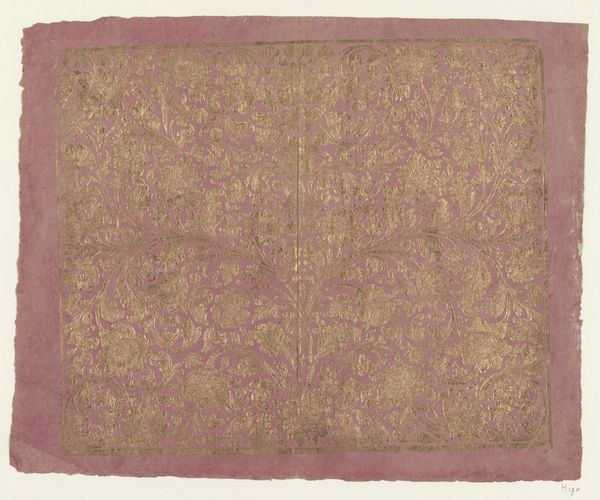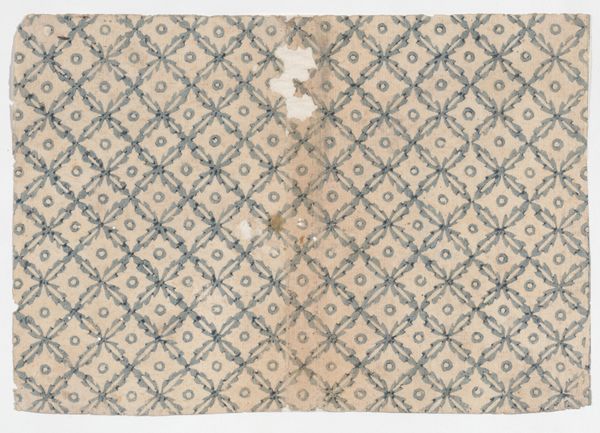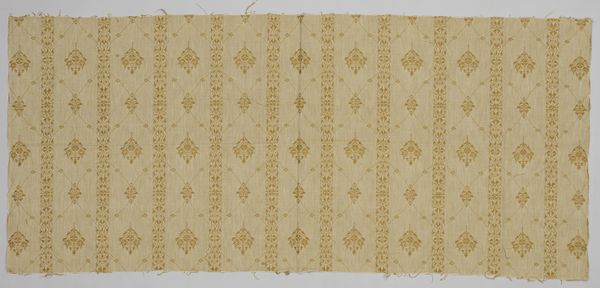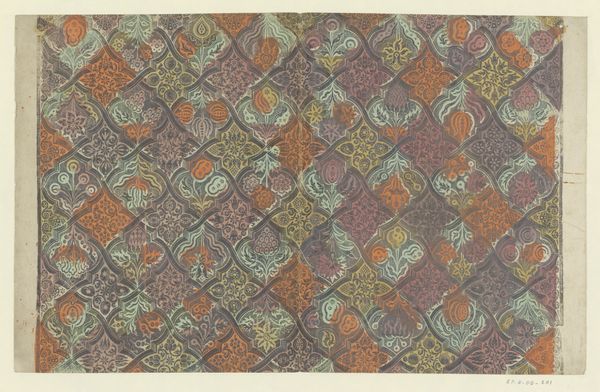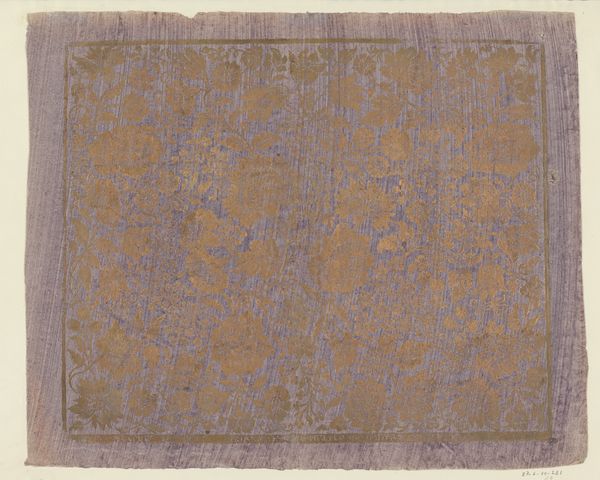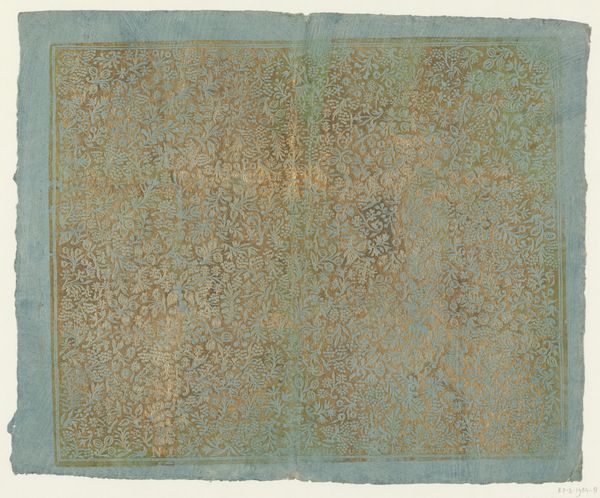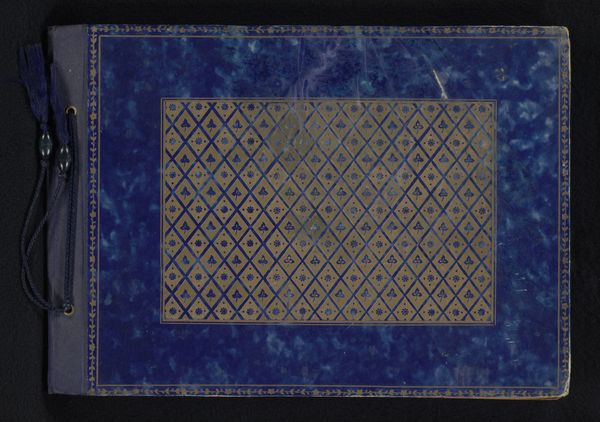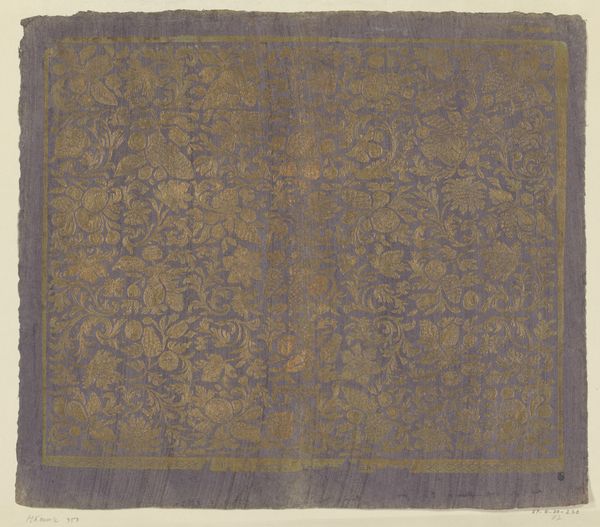
mixed-media, textile, paper, watercolor
#
mixed-media
#
organic
#
water colours
#
pattern
#
textile
#
paper
#
watercolor
#
tile art
#
organic pattern
#
repetition of pattern
#
pattern repetition
#
decorative-art
Dimensions: height 316 mm, width 386 mm
Copyright: Rijks Museum: Open Domain
Curator: This intriguing work from the Rijksmuseum, dating from around 1783 to 1815, is described as a sheet featuring a diamond pattern of tendrils, with flowers filling the fields. It employs mixed media, including watercolour on paper. What are your initial thoughts? Editor: Oh, it’s instantly calming, almost hypnotic. The muted blues and gold create a very dreamlike quality, like looking through a vintage kaleidoscope. Curator: Precisely. Considering its time, and that description as textile, one wonders about its intended use – perhaps a design swatch? How the repetition speaks to the mechanization influencing artistic output. Editor: Maybe! Or it could have been someone's artistic exploration, riffing on botanical forms. Those little floral flourishes inside each diamond add a touch of individuality to what could otherwise be a very rigid structure. I appreciate that imperfection. Curator: Imperfection, yes, within a structured commercial framework of pattern production. Analyzing the paper, the pigments, allows one to trace the trade routes. Watercolours specifically show the influence of industrial production techniques upon availability. Editor: The texture, visible even in a reproduction, lends such an undeniable craft, the artist layering these elements of foliage with intent and perhaps an idea towards how fabric drapes or catches the light. I’m wondering if the slight asymmetry was purposeful, aiming for the handmade even within the repeatable. Curator: Good point! It brings us to larger discussions around artisanal labor facing an increase in industrial capability during that era, influencing craft guilds or domestic manufacture. Editor: It makes you think about the maker's process, doesn’t it? This object sparks connections between precision and whimsy in art making. Curator: Exactly. Thank you! Exploring this textile sheet really sheds light on the industrial revolution’s effect upon art and labor during that pivotal period. Editor: Yes, this image gives voice to an era of repeating motifs and artistic vision, inviting questions of mass-production versus individual imagination.
Comments
No comments
Be the first to comment and join the conversation on the ultimate creative platform.
